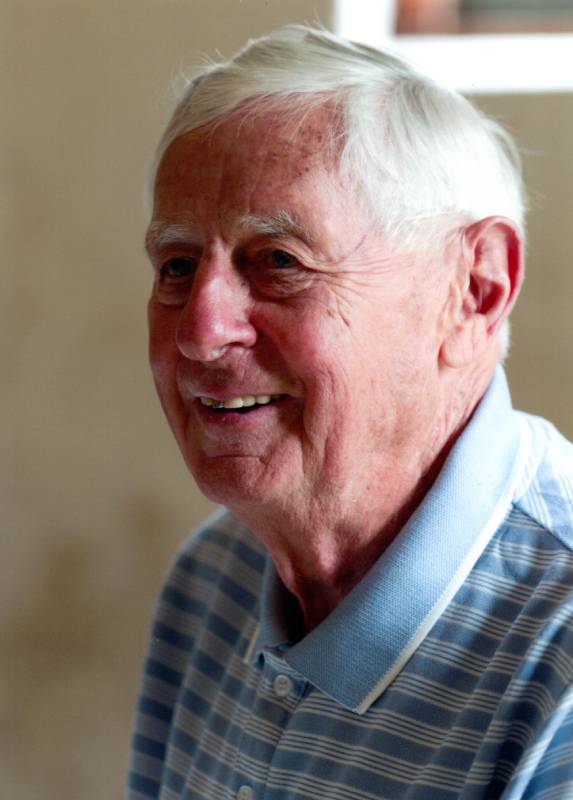Jubilee Fellow – 2018

Mr Bob Wallace
BCom (hons) (Melbourne), BPhil (Oxford)
Discipline: Economics
Year Elected: 1978
2018 Reflections
The President in the letter informing me of this award suggested possible topics for reflections. One was for accounts of my work prior to and after becoming a fellow. That was helpful as they were quite separate careers.
The first began in the Adelaide economics faculty. Over the decade from his appointment in 1951, Professor Peter Karmel recruited a dozen enthusiastic young economists fresh from graduate studies. He chose well: almost all went on to chairs, and under his guidance the department flourished. It was my good fortune that, along with Geoff Harcourt and Keith Hancock, I served my academic apprenticeship under such a talented master.
Peter expected quality teaching and led by example with his macroeconomics course. When in 1961 he was appointed Principal-Designate of what was to become Flinders, with him as vice chancellor and Keith as professor of economics, Geoff Harcourt and I took over his course, and over the next few years, using his material as a framework, the three of us developed it into Economic Activity (C.U.P. 1967), which was widely adopted.
Peter also expected responsible use of the public’s money. When he found research funds were used to buy expensive electric pencil sharpeners, we each received in our mail box a traditional threepenny school sharpener, ‘With the compliments of the Dean’.
In the immediate post-war period, Australian financial institutions were highly regulated and protected from both foreign and domestic competition. The banks employed legions of clerks in ubiquitous branches to provide 19th century service : ‘10-3, Monday to Friday’. The remarkable transformation of the system and its absorption into the digital leviathan giving us 24/7 access to the international system together with the associated booms and busts and adventures of buccaneer entrepreneurs, provided material for five co-edited books, with the topics and authors changing with developments. My co-editor for the two first (1964 and 1967) was Ron Hirst, and for the others (1985, 1993 and 1997), our former student, Mervyn Lewis, who has taught me far more than I taught him.
In 1965, I returned from a year as assistant professor at Stanford eager to join Keith’s two other recruits, Mat Polasek and Michael (‘Mike’) Artis, as founding fathers of his imaginative degree.
Australian governments were pioneers in the application of the Keynesian ‘functional finance’ approach as a stabilising technique. Mike and I decided to test its effectiveness. In a first paper we described the measure we designed to assess the impact of fiscal policy, and in a second we used the measure to assess the budgets of 1945-1966. Our sobering findings were that, while the theory of functional finance is readily understood, its effective implementation is very difficult and on some occasions counterproductive.
As a student my reading of the first edition of Paul Samuelson’s Economics, together with lectures from the charismatic Richard Downing, had filled me with enthusiasm for the ‘New Economics’, so I was delighted to accept Keith’s invitation to share the preparation of the Australian edition (1970) based on Samuelson’s 7th edition. Samuelson gave us a free hand (subject to proper acknowledgement) and we made good use of it, leading Samuelson in a lecture in Canberra to say he was led to believe he would not fully understand Samuelson’s Economics until he read the Australian translation. Nevertheless he and his publishers agreed to two further editions.
The emergence of entrenched stagflation in the 1970’s sorely tested economic theorists. When his grandson asked the Nobel laureate what he was doing about it, Samuelson replied, “Son, I am worrying”; I gave up macroeconomics, regretting I had not balanced Samuelson’s forceful Yang with the Nobel laureate Hayek’s moderating Yin – and moved on to the second career.
This began with two major projects at NILS, funded by the Whitlam government’s Hospital and Health Services Commission. The first concerned the implications of the proposed transfer of nursing training from the hospitals to the new C.A.E. sector, and the second, a study of the costs of alternative forms of aged care. The findings were published as NILS reports, co-authored with my research assistant, Craig Bennett.
A year as the economist member of the Industries Assistance Commission for its inquiry into the pharmaceutical industry proved highly productive. Every level of the industry from the production of drugs, their assessment by bureaucracy for use in Australia, distribution through the wholesale and retail sector, together with the Pharmaceutical Benefit Scheme, was riddled with entrenched restrictive practices harmful to both the health and purse of the general public.
The Commission’s final report (Pharmaceutical Products, April 1986) recommended many changes. The most important, radical reform of the PBS was promptly implemented, and others followed.
For many years I enjoyed the Academy’s annual proceedings, renewing contacts with the Karmel diaspora and colleagues from my time at UPNG, making new contacts, and participating in Panel B.
My main contribution to the Academy was the account of Health Economics, prepared with Jeff Richardson, for the Surveys of Australian Economics, edited by Fred Gruen.
On becoming an octogenarian I opted for emeritus status, but have maintained contact via the website and participation in the meetings of the South Australian group. I appreciate the opportunities the Academy has given me, and am especially grateful to have lived the additional years to qualify for this Jubilee Award.